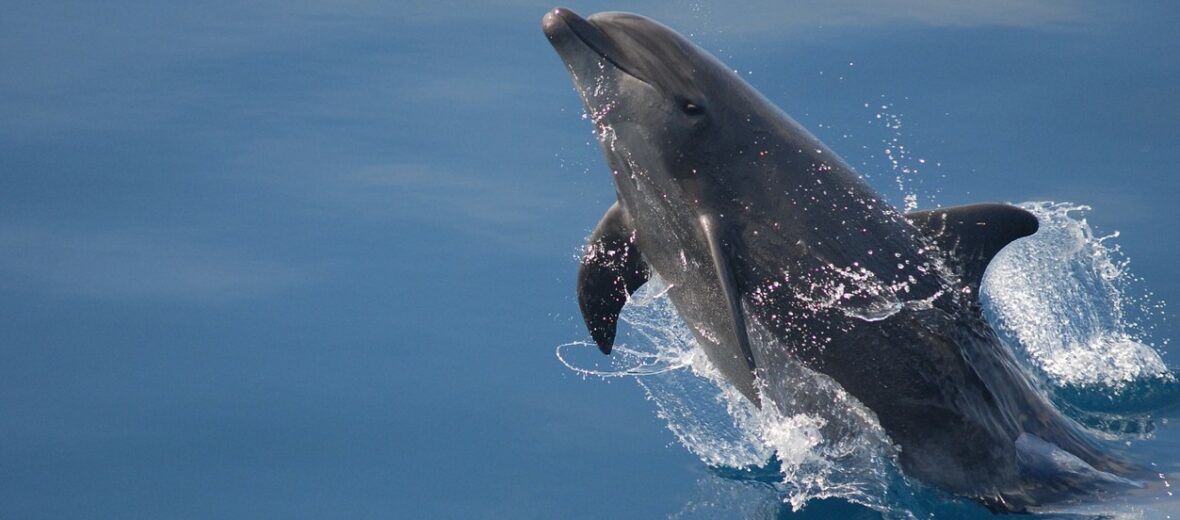
Made popular by TV, movies, and sadly public aquariums, the bottlenose dolphin is a marine mammal that belongs to the family Delphinidae. It can be found in tropical and temperate oceans all over the world. Bottlenose dolphins live in the open sea, but they often visit bays and estuaries. The biggest threats to the survival of bottlenose dolphins are illegal hunting, bycatch (accidental entrapment in fishing nets), and pollution. So basically… humans.
First the Stats…
Scientific name: Tursiops
Weight: Up to 1,400 lbs.
Length: Up to 13 feet
Lifespan: Up to 60 years
Now on to the Facts!
1.) The bottlenose dolphin has a poor sense of smell, but excellent eyesight and a well-developed sense of taste.
2.) Due to a very well developed and large brain, these dolphins can be trained to understand hand signals, can look for objects, and even perform tasks!
3.) Bottlenose dolphins use echolocation to find food and avoid obstacles in the water. They produce clicking sounds that bounce off objects and return back to the dolphin to give them information about size, shape, and type of objects in the water.
4.) It has been widely observed that these dolphins will act as a well synchronized pod and herd fish into a tight ball and then they take turns darting through the fish ball to better their chances of catching prey.
5.) These dolphins eat fish, crustaceans, and squid.
But wait, there’s more on the bottlenose dolphin!
6.) Dolphins live in groups called pods. These pods can be anywhere from 10 – 15 up to 100 or more in size.
7.) The bottlenose dolphin can dive to a depth of approximately 1,770 feet and spend up to 10 minutes underwater before having to surface for air.
Did you know…?
When a dolphin sleeps, it rests only 1/2 of its brain. The other half stays alert to keep them from drowning and this also helps them look out for predators! This is known as unihemispheric sleep.
8.) Dolphins breach the water to remove parasites and to play. They are able to leap up to 20 feet out of the water! They also ride wakes, created by boats, for fun!
9.) Dolphins are among the only animals known to procreate for fun and not just out of necessity.
10.) These magnificent animals are often found in aquatic parks on exhibit. This is a very poor and stressful environment for such an intelligent creature. I avoid aquariums that have dolphin shows or orca shows.
But wait, there’s still more on the bottlenose dolphin!
11.) They breath through a blowhole located on the top of their head.
Did you know…?
These dolphins can swim up to 12 mph. With faster bursts.
12.) Just like whales, dolphins can communicate via physical behaviors, clicks, and whistles.
13.) Tiger sharks, dusky sharks, bull sharks, and great white sharks have been known to prey on these dolphins.
14.) Females birth a single calf, after a 12 month gestation (pregnancy), every 3 – 6 years.
15.) Bottlenose dolphins can consume up to 15 lbs. of food a day.
Now a Short Bottlenose Dolphin Video!
Also, check out the Critter Science YouTube channel. Videos added frequently!
Want to suggest a critter for me to write about? Let me know here.



